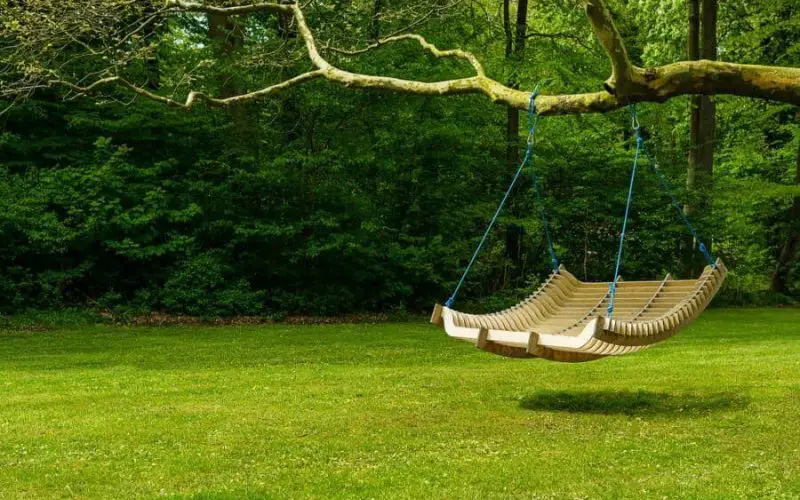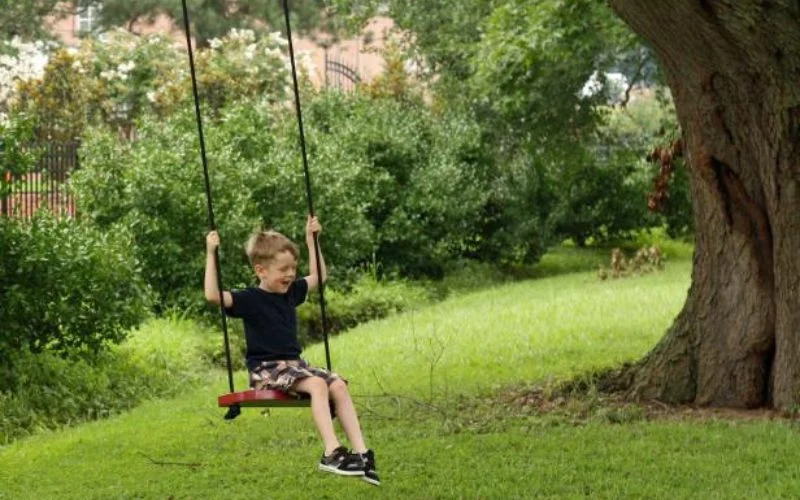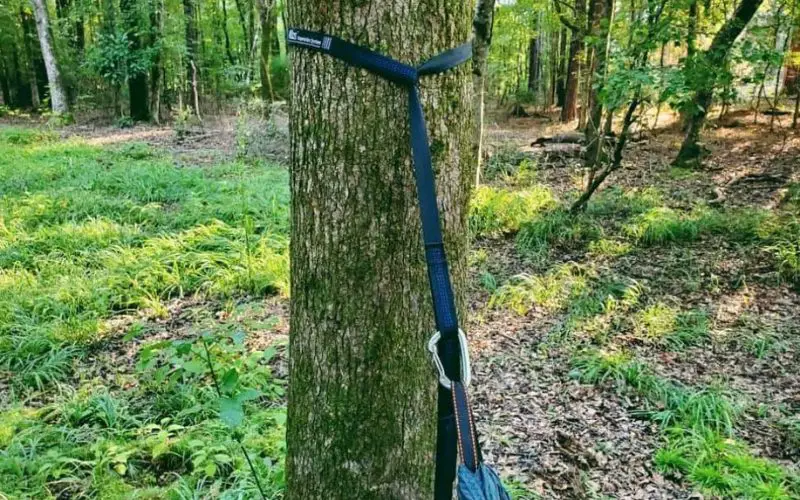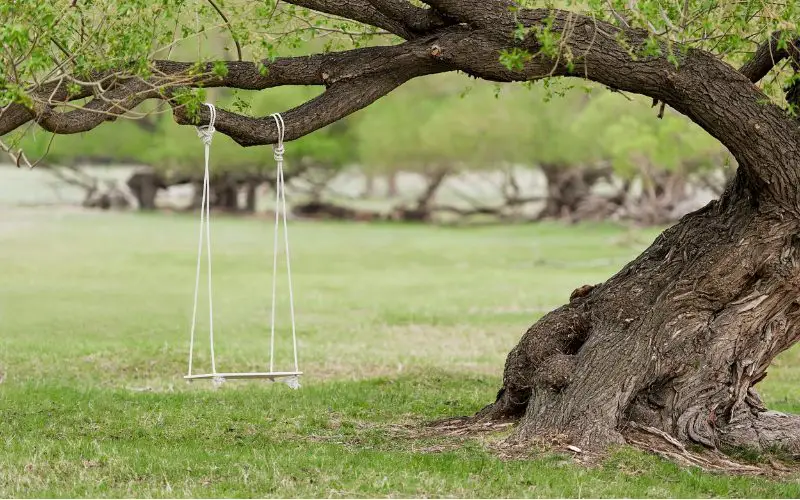If you’ve had a nostalgic feeling about tree swings from when you were little and want to have the same experience or give the little ones the same feeling, then you can do so.
Looking at the tree in your backyard, you are probably wondering, how do I know if a tree branch can hold a swing? Well, an ideal branch has to be thick and come from a hardwood tree to be used for a tree swing.
This article reveals the properties of a good branch for a tree swing and the properties that pose as red flags when choosing a branch for your tree swing.
The Best Type Of Trees For A Swing

Aside from the branches, the tree determines the longevity and your experience using the swing. When evaluating the tree in your yard, you must consider its location, height, age, and type of tree.
Location
The surrounding area of your tree, especially where the swing will be located, should have a free space of about 12 feet. There should be no obstacles like boulders, rocks, pools or ponds, furniture, and other trees and bushes.
Also, check the landing area around the tree and ensure it has a stable land setting. The last this you want is an area with rocks or hills that will make landing difficult and dangerous.
Height
Many trees can grow as tall as 50 feet, but hanging your swing from that distance is not intelligent for safety reasons. Your swing should be hung 10-15 feet from the ground for the best swing experience.
If the height of our swing is less than 10 feet, it will have a hard time moving back and forth, which is not great for swing users.
The height at which you hang your swing depends on the age group using the swing. If you have toddlers and pre-teens using the tree swing, you should settle for hanging it at 10 feet. However, if teenagers and adults use the swing, you should hang it at 15 feet.
Age
An older tree does an excellent job supporting body weight when using swings. Choose a tree no younger than ten years. That is because a tree this old has already established its roots, and you rest assured that it won’t rip out due to any body weight.
Some ancient trees may need to be healthier and have more muscular branches. It is one factor you need to watch out for.
Type of tree
The ideal type of tree for a swing is an old hardwood tree which is healthy and robust enough to support any bodyweight no matter how heavy it is. Here are some of the best tree species for a tree swing.
- Maple
- Oak
- Ash
- Cherry
- Hickory
- Cedar
- Beech
- Sycamore tree
These species listed above grow into healthy and sturdy trees with time to withstand any pressure from a swing. In contrast, some trees could be better for hanging swings.
- Willow tree
- Pine tree
- Spruce tree
- Poplar tree
- Silver birch tree
How do you know if a tree branch can hold a swing?

Generally, an ideal branch for hanging swings should be healthy and have some specific qualities. Here are what you should look for in a branch that will hold your swing.
- It should come from a healthy tree. Check your tree for any rot or unusual cracking.
- When tapped with a hammer or any other hard object, it should not sound hollow.
- Other branches on the tree should look healthy and robust as well.
- It is free from cracks in its joint.
- Ensure that your branch is thick but not too thick. Very thick branches do not have a solid connection to the tree. The standard size ensures that the branch has a diameter of at least 8 inches.
- Ensure that the branch is not too close to the tree.
What are tree straps and how are they used?

While ropes and chains are excellent support for your swing, they will wrap the tree branch with time, which is not best for safety reasons. Tree straps are an alternative to ropes and chains as they are more comprehensive and cause less damage to your tree branch than these materials do.
To keep having healthy trees while using tree straps, change these straps often after every few years.
Tips for hanging a tree swing
You must ensure every step is correctly done when hanging your tree swing. Here are some helpful tips for hanging your tree swing.
- Choose a healthy tree with sturdy branches.
- Using ropes, use strong materials like polyester, manilla, or braided nylon.
- Leave at least three hoofs of space between your trunk and the swing.
- Inspect your rope regularly to ensure no damage is done without any notice.
There are several methods for hanging your swing, but this depends on the nature of your branch. Following the appropriate steps if you are hanging your swing from one or two branches or an inclined branch.
Conclusion
There are several reasons you may decide to hang a tree swing. It may be because of nostalgic childhood feelings or because you love tree wings as outdoor decorative items.
Whatever the reason, selecting the right branch for this task is crucial and ensures your safety and experience of using the swing. You may also want to check out How to Hang a Swing Between Two Trees.
Before selecting a branch for your swing, you need to consider the overall health and position of the tree. Older trees are sturdy. However, some species could be better for hanging swings.
Helpful Articles:
- How to Hang a Tree Swing on an Angled Branch
- How to Hang a Swing from a Tree Without Branches
- 3 Easy Methods to Hang a Swing Between Two Trees
You will also need to consider the landing space and the intended height of your swing. The branch should have a diameter of at least 8 inches and be from a healthy tree free from rot and termite infestations.
These are details you should have learned after reading this article.
Kindly reach out to people by sharing this post on social media.
If you liked this article, then please follow us on Facebook, Instagram, and Pinterest.

